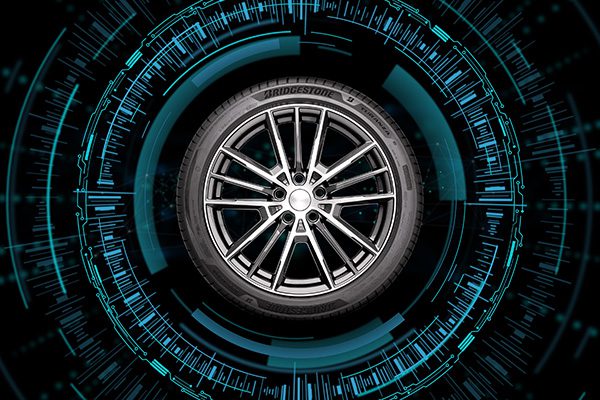
Bridgestone has issued a unique insight into the future of the original equipment market (OEM), revealing four tyre trends to look out for as the automotive industry further evolves.
As a key partner and major tyre supplier for the world’s leading manufacturers, Bridgestone continues to hold a significant share of the OE market, including designing and supplying more fitments for EVs than ever before.
The original equipment (OE) market has undergone huge change in recent years – especially in Europe – and now, the Bridgestone OE team has shared its four major trends that they believe are set to have the biggest impact on an evolving automotive industry throughout 2024 and beyond.
The European car market will continue adjusting to the ‘new normal’
From the pandemic in 2020 to 2021’s semiconductor shortage, and the energy price increase and inflation spike of 2022, OE demand in Europe has faced successive headwinds that have heavily impacted new car sales and production. And despite a double-digit recovery in 2023, OE demand is still 20% below pre-Covid levels.
We now must see this as a structural change in the market and not just a cyclical adjustment. There are several factors contributing to this, with the increase in the price of new cars being one of the chief reasons.
Looking at the OEMs (original equipment manufacturers), there are clear winners and losers in this evolving market. And we can expect further changes in the coming years as they continue adjusting to a very changed industry and world.
OEMs will continue to go all-in on EV
In the first 10 months of 2023, battery-powered electric vehicles (EV) represented 14% of car registrations in Europe – higher than diesel. EV, combined with plug-in and mild hybrids, were just over 51% of the market.
The electric revolution is in full swing, and undoubtedly the main driver for EV adoption is the regulatory requirement for zero emissions vehicles by 2035 in the EU and the UK. 2035 may seem quite far away now, but really, it’s only two product cycles away; OEMs are already working on the technologies and platforms to use from 2030.
While the historical barriers to EV adoption – like range anxiety and charging infrastructure – are being addressed, the cost of new EVs is now seen as a core issue. That’s why several OEMs have announced much cheaper entry-level EVs, retailing at less than £22,000.
What does this mean for the tyre industry? The performance balance for EV is slightly different to Internal Combustion Engines (ICE), and we see that OEMs are still adjusting their requirements to find the right balance between key factors like rolling resistance, wear, noise and wet handling. For Bridgestone, our strengths in virtual tyre development in particular are empowering us to quickly and efficiently develop new proposals based on evolving OEM requirements.
OEM sustainability demands will further intensify
If we go back only three years, big corporations talked about high-level aspirations in CO2 emissions, but with little impact on operations. Fast-forward to today and sustainability has become a fourth pillar of the OE business, alongside our commercial, engineering and quality offers.
The level of detail now requested against the CO2 footprint of our products and the materials used in our tyres, for example, is far more complex than it was just a couple of years ago.
One of the biggest challenges in the coming years will be how we continue to increase the volume of renewable and recycled materials in tyres. Our OEM partners are now very interested in knowing where we will obtain these materials from, how we guarantee their quality, and how we manage the external certification they’re now demanding at scale.
Newcomers will struggle
Go back five or six years and there was a lot of expectation that a new wave of entrants from outside the traditional automotive players would sweep into the market. Then it was assumed that EVs were much easier to develop and produce than traditional ICE-powered cars.
Sadly, the picture at the end of 2023 was very different. Many newcomers have struggled with the complexity of building cars at scale and in finding the huge amounts of capital needed for vehicle development – especially as interest rates have gone up sharply. It’s become clearer in recent times that the ‘revolution’ that was expected will be much more of an ‘evolution’. But that doesn’t mean entering the market is impossible.
It’s safe to say that we are seeing an abnormal rate of change in the automotive industry. But we are convinced that Bridgestone has the product and technology to continue supporting our OEM partners as they move forward.
Source: Tyretradenews




























